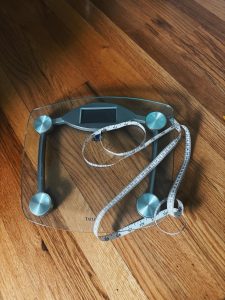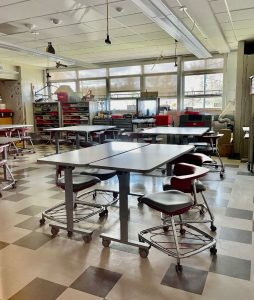NPHS Bridge Builders “Plan to Get First” at This Year’s Competition
November 11, 2014

With December now around the corner, the New Providence bridge building teams are stepping up their work on their entries for the annual Union County College Bridge Building Competition. Every year, in the first week of December, Union County College, a community college located in Cranford, hosts an engineering event where students compete to build bridges using just tongue depressors, glue, and string.
The students who participate in the competition are divided into two groups: advanced and novice. The novice division is for students who are participating for the first time, and the advanced division is for those who have participated before. The two divisions are ranked separately.
The competition occurs over a period of about a month, not just during the single, on-site event. Several weeks before the competition, students are given specifications on the number of dowels to be used in the bridges, the lengths of the bridges, and the weight limits for the bridges. The students divide themselves into teams and draft their designs to be submitted to the competition. Then, the bridge building directors at each school distribute the construction materials. Use of any materials other than those given to the teams by the directors results in immediate disqualification. The teams begin the building process, using everything from the heavy woodshop equipment to string and sandpaper to craft their bridges. For serious teams, the building period can require several members to spend hours daily working on the bridge.
Finally, on the day of the competition, the bridges of teams from various local schools are pitted against one another. Each bridge spans two tables, and one member from the team stands on each side of the bridge. According to an announcer’s instructions, they place weights on the bridge’s numbered dowels. Tensions rise as bridges, one after another, collapse, startling both the team members tentatively placing the weights and those watching in the audience. For the final ranking of the bridges, the organizers of the event use a mathematical formula to define the efficiency of a bridge. In order to win, a bridge must be the most efficient, both light and able hold a great deal of weight. The bridge that can withstand the most weight does not necessarily win, because it may be so heavy that its result from the efficiency equation is lower than those of other bridges. However, the position of the “last bridge standing,” despite not being an official award from the competition, is still a respected achievement among the builders.
For the past three years, Teen Technology, an engineering program for home schooled children, has dominated the competition, winning the gold in both the novice and advanced divisions. Recently, New Providence has been on the rise, with one team winning silver in the advanced division for the past two years.
New Providence suffered last year because the bridge, while attaining the title of the “last bridge standing,” carrying a whopping 520 pounds, was far too heavy, just scraping under the official weight limit.
“This year we are going for a far more efficient bridge,” said Kesim. “We have the same general plan for the bridge, but we are cutting it down so it will be lighter.”
Kesim’s determination shows that the endurance of the Pioneer’s spirit, when facing adversity is evident even in New Providence’s smaller, lesser known competitions such as bridge building.


















